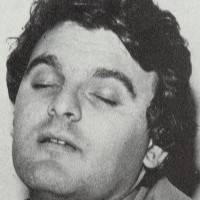
b: 1952
Giuseppe Greco
Summary
Name:
Giuseppe GrecoNickname:
Pino Greco / Scarpuzzedda (Little Shoe)Years Active:
1970 - 1985Birth:
January 04, 1952Status:
DeceasedClass:
Serial KillerVictims:
58Method:
Shooting / Strangulation / BombingNationality:
Italy
b: 1952
Giuseppe Greco
Summary: Serial Killer
Name:
Giuseppe GrecoNickname:
Pino Greco / Scarpuzzedda (Little Shoe)Status:
DeceasedVictims:
58Method:
Shooting / Strangulation / BombingNationality:
ItalyBirth:
January 04, 1952Years Active:
1970 - 1985bio
Giuseppe Greco was born on January 4, 1952, in Ciaculli, a rural district near Palermo, Sicily. He grew up in a Mafia family—his father, nicknamed "Scarpa" (Shoe), was a respected local mafioso. Despite the infamous Greco surname, Pino was not related to the powerful Greco bosses of Ciaculli and Croceverde-Giardini. As a boy, he was reportedly bright in school, excelling in classical studies like Latin and Greek, but his path soon turned to organized crime. Greco began his Mafia career as a driver for boss Tommaso Spadaro. By the late 1970s, he had become a rising figure in the Ciaculli family and formed a close friendship and criminal partnership with Giuseppe Lucchese.
Greco’s reputation for violence and loyalty to the Corleonesi bosses—Salvatore Riina and Bernardo Provenzano—set him apart from the start. He quickly became a key ally of the Corleonesi, participating in violent takeovers and the systematic elimination of rivals. By 1979, he sat on the Sicilian Mafia Commission, an uncommon position for someone from a non-boss background.
murder story
Pino Greco became infamous during the Second Mafia War (1981–1984), a bloody conflict that allowed the Corleonesi to seize control of the Sicilian underworld. As the leader of a “death squad” composed of notorious killers, Greco was personally involved in dozens of high-profile assassinations, usually wielding his weapon of choice, the AK-47. He murdered or helped murder rival bosses like Stefano Bontade, Salvatore Inzerillo, and Pio La Torre, as well as government officials and law enforcement officers including police investigator Ninni Cassarà and anti-mafia magistrate Rocco Chinnici (the latter via car bomb).
He did not shy away from the most gruesome acts—Greco was known to strangle victims with garrotes, dissolve bodies in acid, and even kill family members of rivals. One of the most shocking episodes attributed to him was the murder of a fifteen-year-old boy, the son of Salvatore Inzerillo, whose body was mutilated and destroyed, in a warning against seeking revenge.
Working closely with Filippo Marchese, Greco helped run the so-called “Room of Death,” where countless victims were tortured and murdered. Even after rising to the position of underboss, Greco continued to personally participate in killings rather than delegate, earning him a reputation as both a feared and respected figure among Sicilian mafiosi.
By the mid-1980s, Greco was acting as the de facto boss of Ciaculli while Michele Greco was in hiding. However, his growing independence and popularity among younger mafiosi worried Salvatore Riina, who began plotting against him. In September 1985, just weeks after orchestrating the murder of police investigator Cassarà, Greco was betrayed and murdered in his own home by close associates Vincenzo Puccio and Giuseppe Lucchese, following Riina’s orders. His body was dissolved in acid to delay confirmation of his death; Riina spread false rumors that Greco had fled to the United States.
Giuseppe Greco was convicted in absentia of 58 murders at the Maxi Trial in 1987. His real death was only confirmed by authorities in 1989, after pentiti (informants) revealed the truth. His assassination marked the beginning of a purge of Ciaculli loyalists by the Corleonesi.